Austere medicine: Uses of Epipen (more than once)
Disclaimer: The technique described here fall into the category of disaster and wilderness medicine. It is neither sterile, follows recognized principles for clinical work nor should it be used if several Epipens are available! Use at your own risk. Ensure necessary and proper training and delegation before use. Please read the disclaimer here.
Serious allergic reactions with anaphylactic shock (circulatory failure due to a violent immune reaction and drop in blood pressure) as a result is a demanding condition to manage, especially in pre-hospital settings. In the wilderness this can be fatal. Usual treatment, in addition to opening airways and shock treatment (which is limited), the priority is to give the patient Adrenaline. It comes in the form of an auto-injector with the product name Epipen. In complex cases, one dose is not enough and the patient needs repeated doses of the medication (Nandinee et al., 2021).
If you are responsible for a patient with a known allergy, or as part of an extended wilderness medicine kit, you should at least have an Epipen with you.
First, we will look at the normal use of the Epipen and then present a method of how to can get more doses of medication out of a normal Epipen.
This is what an Epipen looks like when it is ready for use: Blue safety cap has been removed, the orange tip (needle) is "loaded". Follow the instructions before use, make sure among other things, that the Epipen has not expired and that the liquid is not discolored. Adrenaline is actually one of those drugs that break down with heat (and time), and the Epipen loses its effectiveness after it expires.
Demonstration on a cardboard box: Notice the dose: Splash on the left side of the cardboard box.
When withdrawing the EpiPen from the patient, an orange cap protects the needle. It cannot be pushed back again.
This is where the normal use of it ends.
Now here comes the wilderness part use of the Epipen:
In order to be able to make use of several doses that are in the ampoule inside the Epipen, we must first remove the label.
Note the section between the white upper part and the gray lower part. These 2 parts are connected by a strong spring.
Cut the plastic with a saw at the location we found in the picture above.
The easiest way to cut the plastic is with a little saw. You can find these on Muli-Tools such as a Leatherman, Swiss Army knife (Victorinox) or as shown here with a small saw blade, the type that usually is supplied with a magnesium Firestarter.
NB!: When cutting be prepared for the force of the strong spring. It is strong enough to shoot one of the parts a couple of meters!
Remove the spring and gently pull the white plunger that pulls out the ampoule. Beware the needle under the gray rubber.
Notice the discoloration of the Epinephrine. The fluid has to be completely clear. Here, an expired Epipen was used and the medication has changed color.
The vial has no dose indicator (like would be on normal syringes). The plunger, however, has a stopper and we know that a single dose in an adult Epipen is 300ug.
We can repeat this dose if necessary and if the patient has no effect from the previous one. We hold the needle upside and aspirate air (retract the piston until it is almost all the way back). This is approximately 300ug.
When you now turn the vial over, you can give the next dose, subcutaneously (under the skin). Notice the air at the top of the vial.
There is no danger of injecting air into the patient if done correctly and despite that, this danger is negligible (subcutaneously, NOT intramuscular (IM)!) compared to the danger of not giving Adrenaline.
Also note that sterility of the needle is no longer present and that we reuse the same needle several times here.
After the second given dose, the vial looks like this.
The process can be repeated.
3rd dose given. There are still 2 more doses in the vial. A normal Epipen therefore has enough Epinephrine for a total of 5 doses!
The individual parts of the dissected Epipen.
Example of an Epipen with a small saw blade. Here you have everything necessary to give 5 doses of the necessary medication in an emergency.
Remember that handling a severe allergic reaction is a bigger problem than just medicating a patient with Adrenaline / Epinephrine. Medication must always take place after consultation with a doctor / delegation and only after a thorough primary and secondary examination of the patient!
Back

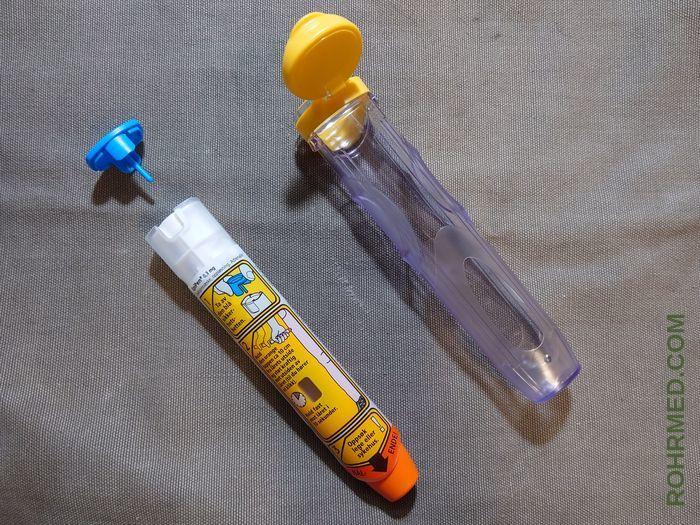
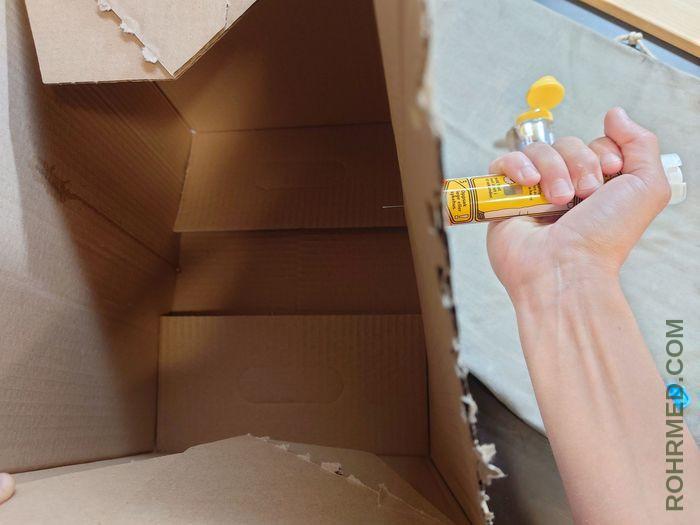

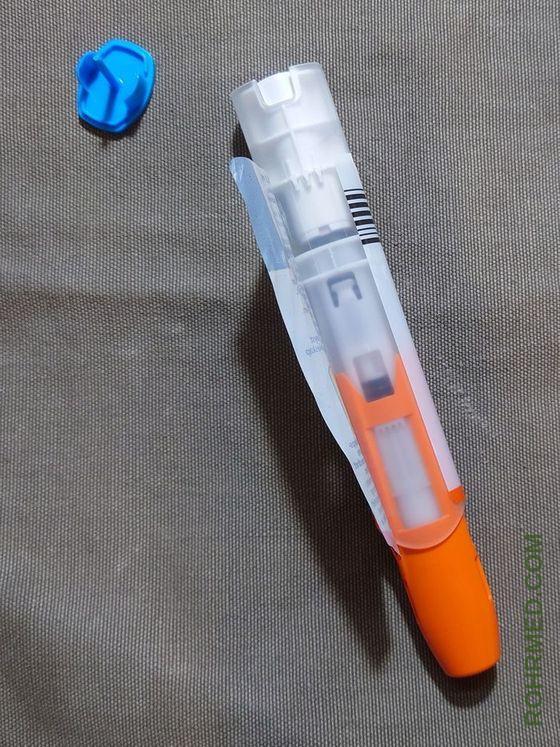
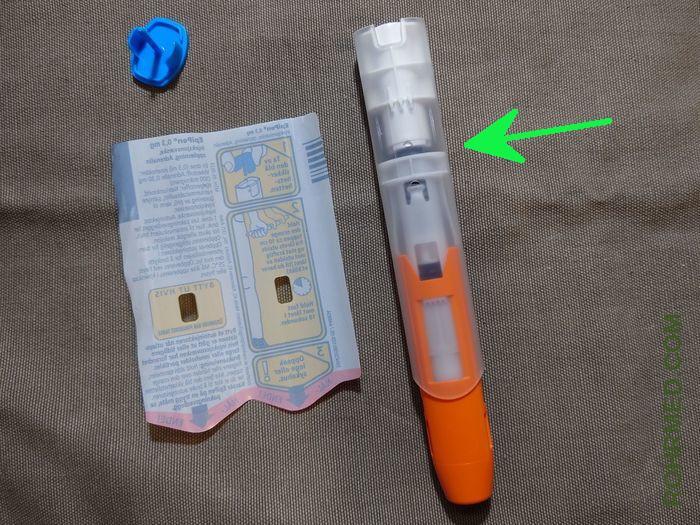
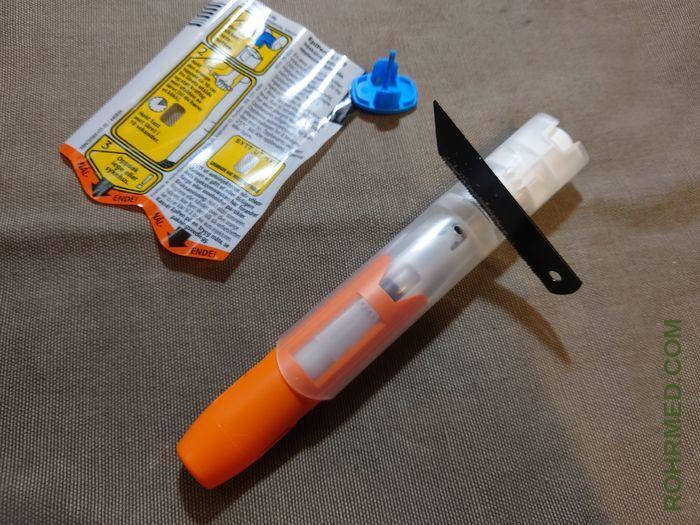
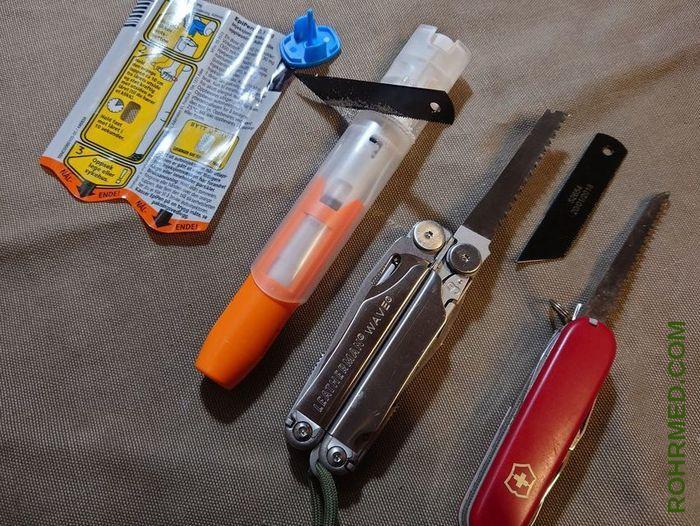
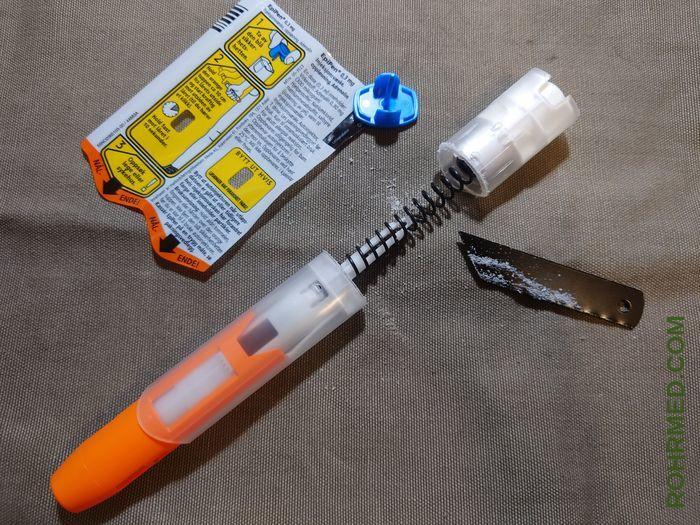
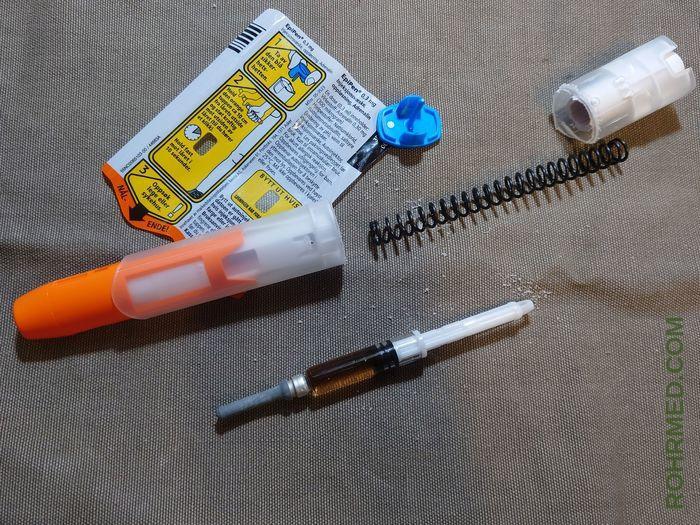

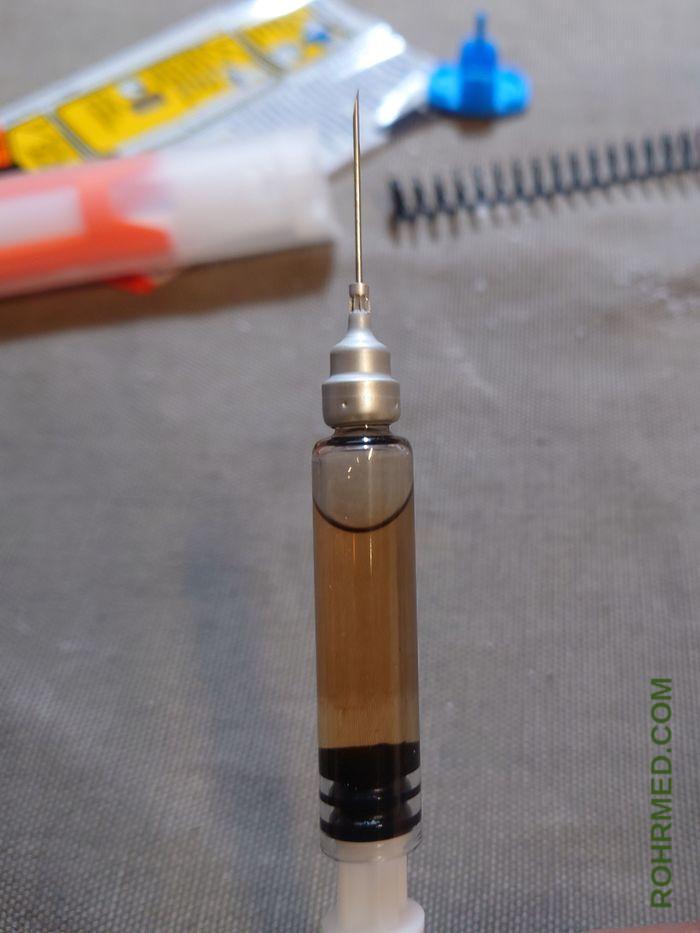
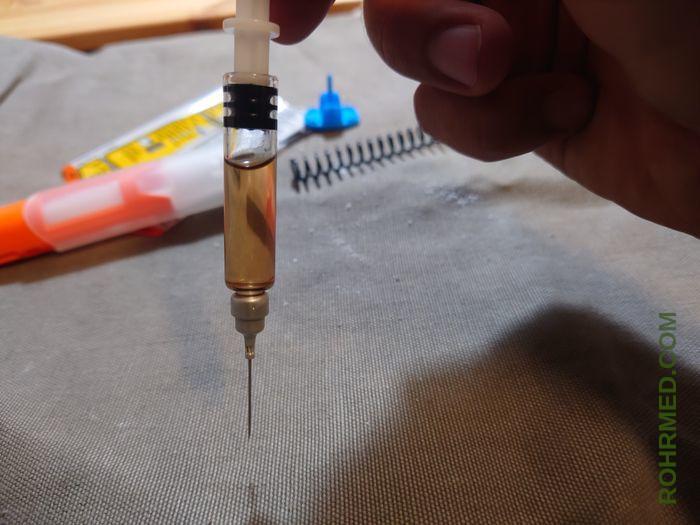
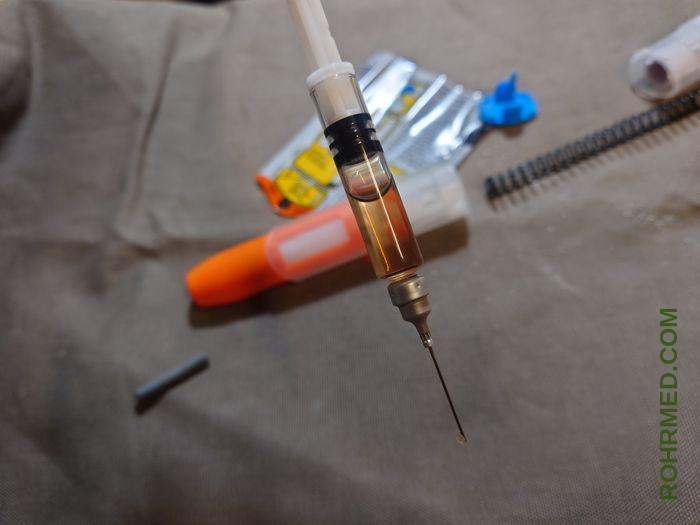
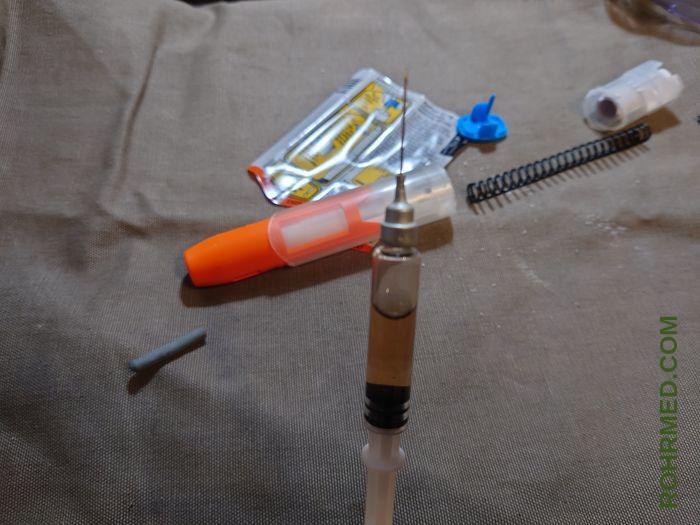


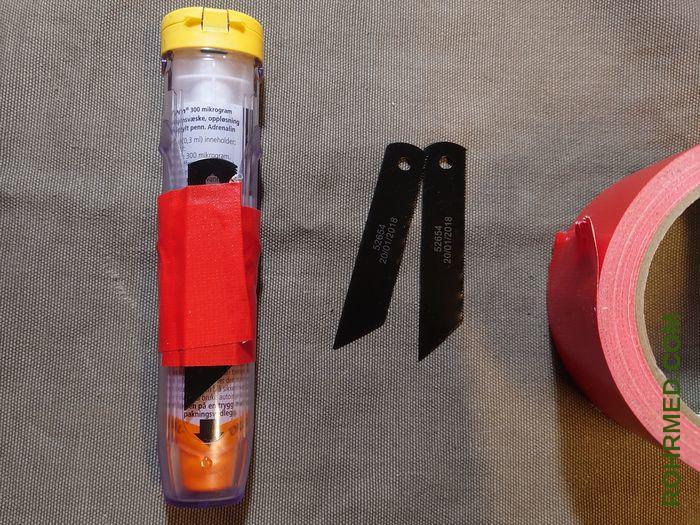
All comments are moderated before being published. Your email will not be visible